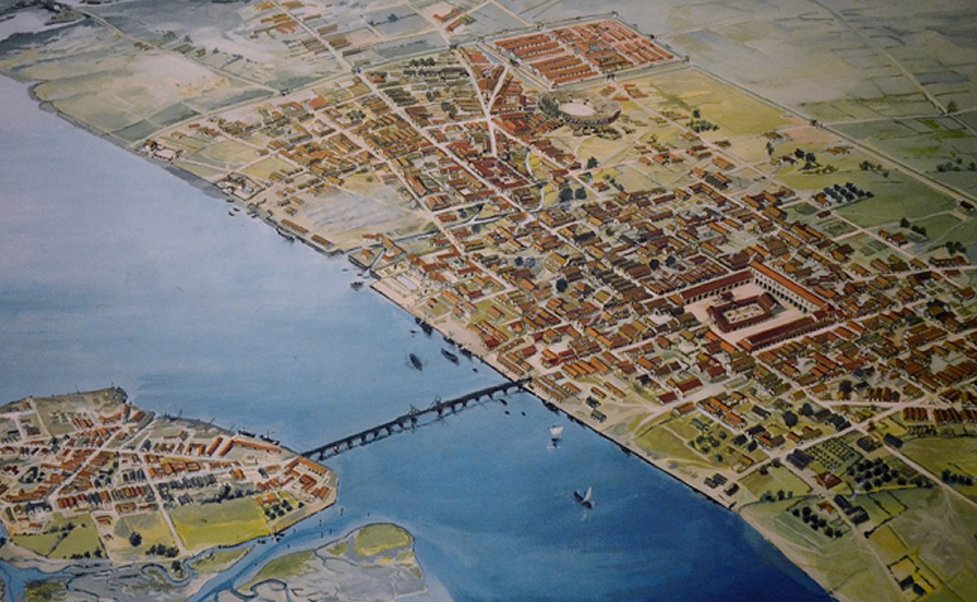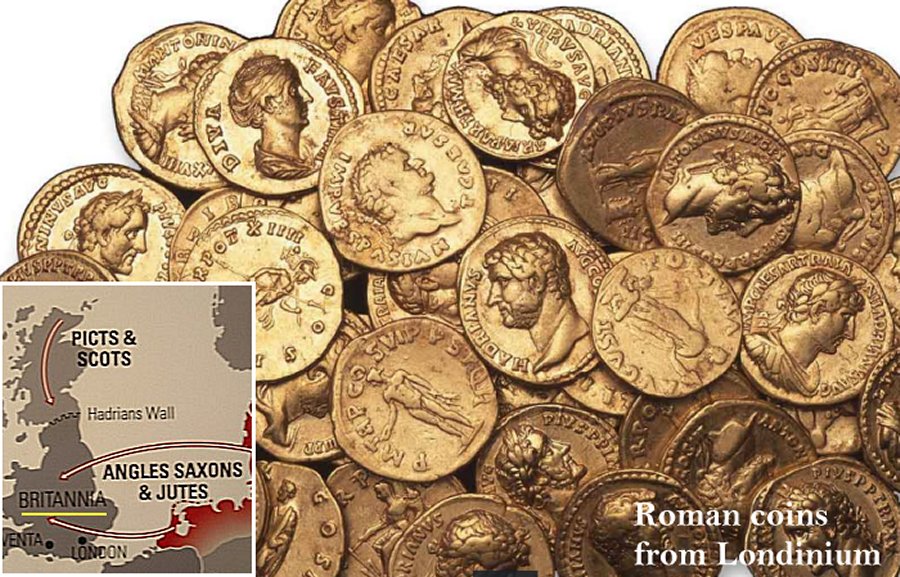Londinium: Ancient Roman Outpost That Became Powerful City Of London
A. Sutherland - AncientPages.com - The Romans established Londinium on the current site of the City of London around 43 AD.
Reconstruction drawing of Londinium c. 120 AD. Image credit: Carole Raddato - CC BY-SA 2.0
The first definite mention of the city refers to the year 60 in the writings of Tacitus, the Roman historian, and senator, who wrote of a celebrated center of commerce filled with traders.
Londinium was equipped with massive defenses: several forts were built along with the immense London Wall, remains of which are still recognizable in the city.
By the reign of Hadrian, Britannia was a fully developed province of the Roman Empire. One of the Roman outposts was Londinium, which eventually became one of the world's most famous modern cities - London.
Initially, Londinium was just a small military outpost occupying a relatively small area of 1.4 km2 (0.5 sq mi), but the city grew rapidly. By the turn of the century, Londinium had grown to about 60,000 people,
Its access to the River Thames and the North Sea also contributed to the city's importance and turned it into a thriving and influential provincial capital and major port.
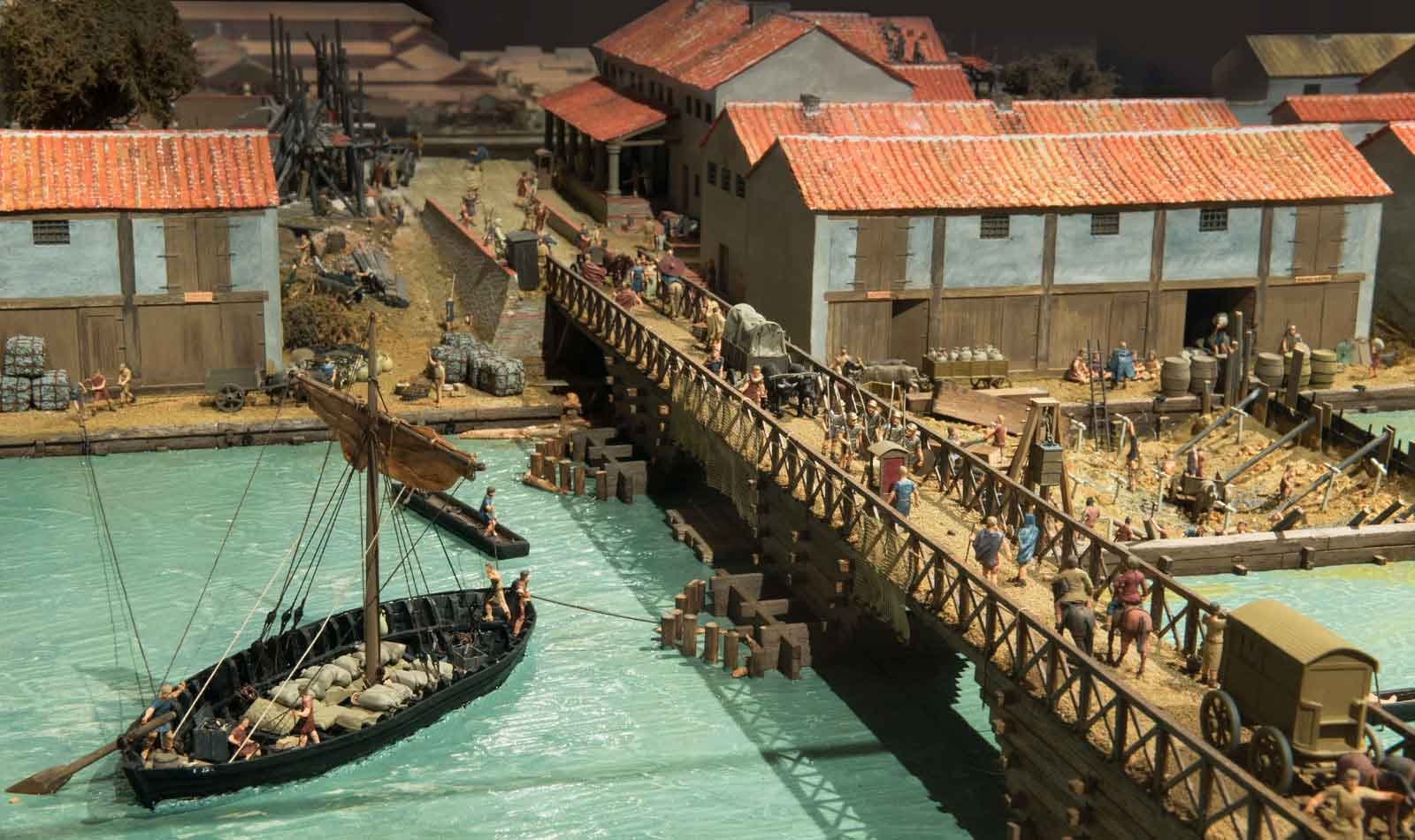 Londinium Bridge. This model shows how the Romans built the first bridge across the River Thames, where London Bridge now stands. Credits: Museum of London
Londinium Bridge. This model shows how the Romans built the first bridge across the River Thames, where London Bridge now stands. Credits: Museum of London
Londinium was not only the center of commerce but also the seat of government. By the 2nd century AD., Londinium was a large Roman city with tens of thousands of inhabitants. Richer and noble people's homes had wall paintings and mosaic floors; many lived in villas and palaces.
They had to their disposal temples, large forums, and baths. Ordinary people lived in tiny houses with front doors and workshops behind. Soldiers lived in the fort, outside the central part of the town.
The city was equipped with massive defenses: several forts were built along with the immense London Wall, remains of which are still recognizable in the city. The Romans also built heavy fortifications for the town, constructing several forts and the massive London Wall, approximately 14.5 feet thick and at least 20 feet high.
Parts of this construction are still visible across the city today. Londinium's well-built roads linked it with several other, smaller towns and continued to the borders of Britannia. The countryside's landscape, dotted with well-developed farms, surrounded Londinium.
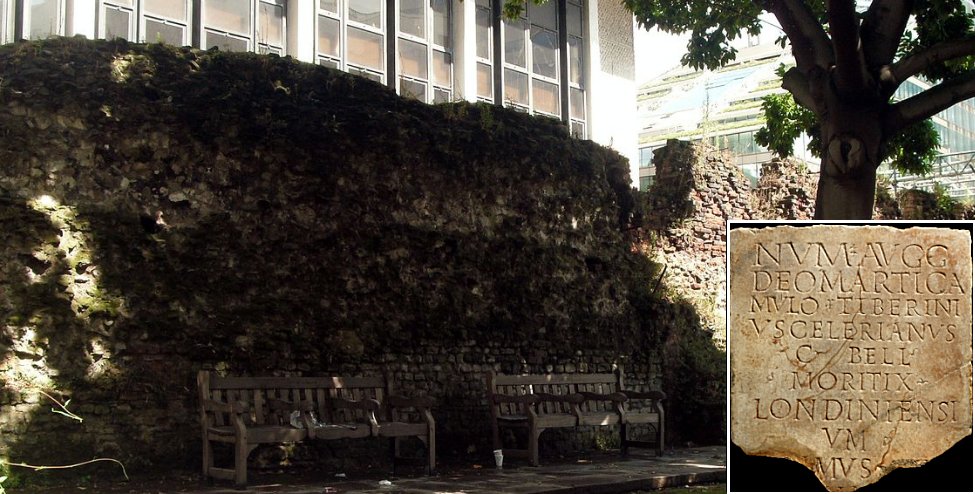 Left: The Roman wall at St Alphege Gardens; Credits: AdamBMorgan - CC0; Right:The first written record to use the word 'Londoners'. Image credit: Udimu - CC BY-SA 4.0
Left: The Roman wall at St Alphege Gardens; Credits: AdamBMorgan - CC0; Right:The first written record to use the word 'Londoners'. Image credit: Udimu - CC BY-SA 4.0
Around 350, a series of 22 solid, semi-circular towers were additionally constructed, and these functioned as bases for ballistae (an ancient form of crossbow used to propel a spear). During the Roman times, several similar town and city walls were constructed by the Romans in England and Wales, and their remains survived until now.
Londinium had been a Roman foundation, and for almost four centuries, it had its importance; later, the great city began to wither and trade, which was so crucial for the town, broke down. The Irish, Scottish, and Saxons from Germany all came to plunder the wealth of Roman Britain. The Roman legions began to withdraw from Britain in 383 AD to secure the Empire's borders in other places of Europe.
According to many researchers, Londinium had always been much more Roman than British, and in the 5th century, still many wealthy Roman families lived in Londinium.
Archaeological excavations revealed their remains in the form of largely hidden hoards of Roman coins and diverse household remains. In 410 AD, Emperor Honorius finally refused to send support to the British Romans. All Roman troops had been withdrawn, leaving the cities of Britain and the remaining Romano-British for themselves.
The Roman Empire's conquest of Britain finally ended, and a new time known as the Dark Ages began.
Written by – A. Sutherland AncientPages.com Staff Writer
Updated on July 22, 2022
Copyright © AncientPages.com All rights reserved. This material may not be published, broadcast, rewritten or redistributed in whole or part without the express written permission of AncientPages.com
Expand for referencesMore From Ancient Pages
-
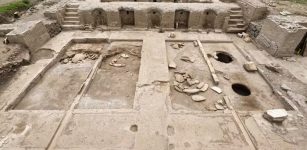 Unique Ancient Roman Winery With Marble Tiling And Fountains Of Grape Juice Unearthed In Rome
Archaeology | Apr 17, 2023
Unique Ancient Roman Winery With Marble Tiling And Fountains Of Grape Juice Unearthed In Rome
Archaeology | Apr 17, 2023 -
 Reports Of Mysterious Whistling Giants Roaming The Cascade Mountains – Ancient And Modern Accounts
Ancient Mysteries | Nov 28, 2025
Reports Of Mysterious Whistling Giants Roaming The Cascade Mountains – Ancient And Modern Accounts
Ancient Mysteries | Nov 28, 2025 -
 Ancient ‘Cosmic’ Artifacts – Ancient Civilizations Used Meteoric Iron Much Earlier Than Previously Thought
Archaeology | Dec 6, 2017
Ancient ‘Cosmic’ Artifacts – Ancient Civilizations Used Meteoric Iron Much Earlier Than Previously Thought
Archaeology | Dec 6, 2017 -
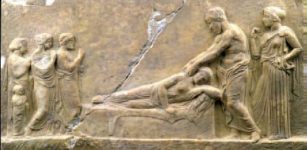 Asclepius Sanctuary On Acropolis Slope Will Be Restored
Archaeology | Jan 3, 2016
Asclepius Sanctuary On Acropolis Slope Will Be Restored
Archaeology | Jan 3, 2016 -
 DNA Sheds Light On Ancient History Of Dogs All The Way To The Ice Age
Archaeology | Oct 30, 2020
DNA Sheds Light On Ancient History Of Dogs All The Way To The Ice Age
Archaeology | Oct 30, 2020 -
 Mystery Of Nazca’s Controversial Three-Fingered Mummies Continues – Attempt To Confiscate The Ancient Remains!
Archaeology | Oct 26, 2019
Mystery Of Nazca’s Controversial Three-Fingered Mummies Continues – Attempt To Confiscate The Ancient Remains!
Archaeology | Oct 26, 2019 -
 Secrets Of The Chephren Pyramid And Its Unknown Mysterious Force
Ancient Mysteries | Mar 20, 2015
Secrets Of The Chephren Pyramid And Its Unknown Mysterious Force
Ancient Mysteries | Mar 20, 2015 -
 Incredible Ancient Extinct World Of Unknown Organisms Discovered
Evolution | Jun 8, 2023
Incredible Ancient Extinct World Of Unknown Organisms Discovered
Evolution | Jun 8, 2023 -
 Norse Shamanism: A Völva And Her Prophecies Were Feared Among Norse Gods And Vikings
Featured Stories | May 19, 2020
Norse Shamanism: A Völva And Her Prophecies Were Feared Among Norse Gods And Vikings
Featured Stories | May 19, 2020 -
 Hiding Tunnel Complex Dated To The Bar Kokhba Revolt Revealed Near The Sea of Galilee
Archaeology | Apr 23, 2024
Hiding Tunnel Complex Dated To The Bar Kokhba Revolt Revealed Near The Sea of Galilee
Archaeology | Apr 23, 2024 -
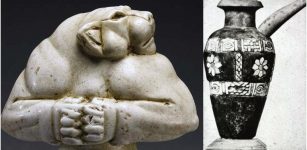 Mesopotamian City Jemdet Nasr Dated To 3100–2900 BC: Sophisticated Irrigation Techniques And Earliest Cylinder Seals
Featured Stories | Dec 18, 2016
Mesopotamian City Jemdet Nasr Dated To 3100–2900 BC: Sophisticated Irrigation Techniques And Earliest Cylinder Seals
Featured Stories | Dec 18, 2016 -
 Largest Figurine Workshop Yet Discovered In The Maya World
Archaeology | Apr 30, 2019
Largest Figurine Workshop Yet Discovered In The Maya World
Archaeology | Apr 30, 2019 -
 Eugenio De Torralba – Renaissance Magician’s Dangerous Spirit Communications
Featured Stories | May 6, 2019
Eugenio De Torralba – Renaissance Magician’s Dangerous Spirit Communications
Featured Stories | May 6, 2019 -
 Incredible Anatomical Human Machines – Two Fleshless Bodies Mystery
Featured Stories | Jul 24, 2018
Incredible Anatomical Human Machines – Two Fleshless Bodies Mystery
Featured Stories | Jul 24, 2018 -
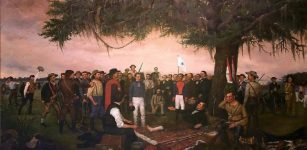 Texas Revolution – A Courageous Fight For Independence
Featured Stories | May 30, 2019
Texas Revolution – A Courageous Fight For Independence
Featured Stories | May 30, 2019 -
 Art Historians Solve Mystery Of Raphael’s Tomb By Reconstructing His Face
Archaeology | Aug 7, 2020
Art Historians Solve Mystery Of Raphael’s Tomb By Reconstructing His Face
Archaeology | Aug 7, 2020 -
 Power Of Water In Beliefs Of Ancient Cultures
Featured Stories | Apr 9, 2019
Power Of Water In Beliefs Of Ancient Cultures
Featured Stories | Apr 9, 2019 -
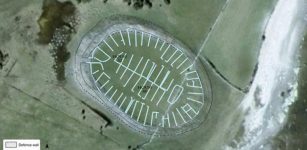 1500-Year-Old Mystery Of The Sandby Borg – Excavation Of Ringfort On Öland, Sweden
News | Jan 1, 2014
1500-Year-Old Mystery Of The Sandby Borg – Excavation Of Ringfort On Öland, Sweden
News | Jan 1, 2014 -
 Face Of Iron Age Female Druid Reconstructed
Archaeology | Aug 20, 2019
Face Of Iron Age Female Druid Reconstructed
Archaeology | Aug 20, 2019 -
 First Genomic Evidence Of Early Migration From New Guinea Into The Wallacea Archipelago – New Study
Archaeology | Jan 14, 2025
First Genomic Evidence Of Early Migration From New Guinea Into The Wallacea Archipelago – New Study
Archaeology | Jan 14, 2025

